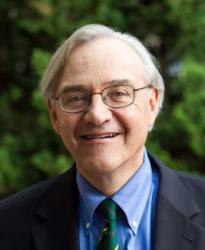The goal of the Presidential appointment process is to certify that the individual is of proper quality, experience, character, and competence. The speed of the process is seen as the sacrifice to ensure that these requirements are met. But it is wrong to assume that the pursuit of ideal character is the only entity holding back the speed of the confirmation process. The primary cause of the issue is structural. The selection, vetting, and confirmation steps, in conjunction with extensive physical paperwork and individual committee jurisdiction over nominees creates an amalgamation of obstructions that slow the process down. Political polarization and the thickening of government are secondary but formidable obstacles to reform.
William A. Galston and E.J. Dionne, Jr. advocate for a two tiered reform of the appointments process. The first set of reforms aims to solve the structural issues and are centered on changes that can be made with relative ease by presidential candidates and presidents-elect. A second tier of reforms would require Congressional action.
Structural and Procedural Reforms
Candidates and the Incoming Administration
- Candidates should start planning early and remove the political stigma from such planning during the campaign.
- Candidates should give their designated heads of the personnel process unchallenged authority over the appointments planning process and make it clear they are expected to remain in that position during the transition and for at least the first year of the administration.
- During the transition, the president-elect and the personnel office should aim to select and vet nominees for all key positions.
- The president-elect should establish numerical goals and timetables for key dates during the first year.
Outgoing Administration
- Treat candidates equally during the campaign to provide the same materials and briefings to all.
- Help expedite security clearances for key advisors and transition officials of both campaigns.
- Prepare a complete inventory and description of all the appointed jobs in the government for both campaigns.
- Facilitate the design and creation of a new presidential personnel computer system.
- The Office of Personnel Management should take the lead in creating an online database of basic information for all presidentially appointed positions.
- Outgoing presidents should request and receive formal letters of resignation from all appointees.
Improving the vetting process
- Simplify the cumbersome personal data statement.
- For previously vetted candidates, start background checks from where the previous checks left off, not from scratch
- Make more effective use of private-sector headhunters to propose candidates for top positions.
- Simplify the SF-86 form (clearance information) and the SF-278 form (financial disclosure information)
- Providing “surge capacity” – additional temporary personnel needed to process the flood of early nominations and background inquiries – in the Presidential Personnel Office, FBI, and relevant Senate staff.
- Authorize an expansion of the White House personnel operation to create a permanent staff of professionals, overseen and supplemented by presidential appointees.
Congressional Reforms
- Institute uniform forms for all Senate committees of jurisdiction over nominees.
- Eliminate or restrict the “holds” that individual senators can place, anonymously and without public justification, on nominees.
- Consider mandatory discharge procedures providing that if a committee does not act within (say) 30 or 45 days of receiving a nominee with a full package of required information, that nomination would become eligible for consideration by the full Senate.
- Consider the implications of thinning the government by reducing the number of Senate-confirmable positions.





